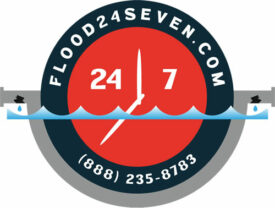Understanding sewage remediation and its importance
Sewage remediation is the process of cleaning and restoring areas affected by sewage backups or leaks. It is crucial because sewage contains harmful bacteria and other contaminants that can pose serious health risks. If not properly remediated, sewage can lead to mold growth and further damage to the property. It involves thorough cleaning, disinfection, and deodorization to ensure the affected area is safe for habitation.

Assessing the extent of sewage damage
When assessing the extent of sewage damage, it’s important to carefully inspect the affected areas for signs of contamination. Look for visible sewage, unpleasant odors, and any areas where water has come into contact with sewage. Sewage damage can pose serious health risks, so it’s crucial to handle it with caution and prioritize safety measures. If you suspect that sewage has seeped into your home, it’s advisable to seek professional help immediately to mitigate the potential hazards.
Safety precautions during sewage remediation
When dealing with sewage remediation, it’s crucial to prioritize safety. Follow these precautions:
- Wear protective gear: Put on rubber gloves, boots, and a mask to avoid contact with contaminated materials and prevent inhalation of harmful substances.
- Ventilate the area: Open windows and use fans to increase air circulation and reduce the risk of exposure to dangerous fumes.
- Avoid direct contact: Refrain from touching sewage-contaminated items and keep children and pets away from the affected area.
- Seek professional help: Consider hiring a certified restoration company to handle the sewage cleanup and ensure thorough disinfection.
Sewage removal and extraction
If your home has been flooded and sewage has backed up, it’s crucial to remove the contaminated water and extract any remaining sewage from your property. Sewage contains harmful bacteria and microorganisms that can pose serious health risks, so it’s important to address this issue promptly and thoroughly. Here are some key steps to consider:
- Safely remove standing water: Use a wet/dry vacuum or pump to remove as much contaminated water as possible from your property.
- Dispose of contaminated materials: Any items that have been contaminated with sewage, such as carpets, furniture, and drywall, should be promptly removed and disposed of properly.
- Thoroughly clean and disinfect: After the sewage has been extracted, thoroughly clean and disinfect the affected areas to ensure that harmful pathogens are eliminated.
- Consider professional help: Depending on the extent of the sewage backup, you may need to enlist the help of professional restoration experts to ensure that the job is done effectively and safely.
Dealing with sewage removal and extraction is a crucial step in the process of restoring your home after a flood, and it’s important to take the necessary precautions to protect the health and safety of your family.
Thorough cleaning and disinfection
After a flood, it’s crucial to thoroughly clean and disinfect your home to prevent mold growth and ensure a healthy living environment. Use a solution of bleach and water to disinfect hard surfaces and remove any mold or bacteria. Also, wash and sanitize all items that came into contact with floodwater, such as clothing, bedding, and dishes. Wear protective gear like gloves and a mask to avoid exposure to harmful contaminants during the cleaning process. Completing a thorough cleaning and disinfection will help restore your home to a safe and healthy state after a natural disaster.
Deodorization and restoration of affected areas
After a natural disaster, it’s crucial to deodorize and restore affected areas promptly. This involves removing any lingering odors and ensuring that the affected spaces are thoroughly cleaned and restored to their pre-disaster condition. It’s important to act swiftly to prevent further damage and ensure the safety and well-being of everyone in the affected areas.
Repairing and replacing damaged materials
After a natural disaster, it’s crucial to repair and replace damaged materials promptly. Reach out to local authorities for information on qualified contractors and reliable suppliers. Document all damaged items and take photographs to support insurance claims. Ensure safety precautions are in place before starting any repair work, and be mindful of potential hazards such as mold and structural damage. Use high-quality and certified materials for replacement to ensure resilience against future disasters.
Mold prevention and treatment
Mold is a common problem after a flood. It can start growing within 24-48 hours of water damage. Here are some tips to prevent and treat mold:
- Dry and clean any wet materials or areas within 24-48 hours
- Use dehumidifiers and fans to reduce moisture
- Remove and discard any items that cannot be dried or cleaned
- Use bleach or mold-killing products on hard surfaces
- Consult a professional for extensive mold growth or severe water damage.
Insurance and documentation
Your insurance policy may cover flooding, but it’s essential to review your policy to understand what is and isn’t covered. It’s crucial to keep all documentation related to your insurance policy and the damage caused by the flood. This includes photographs, receipts for emergency repairs, and any correspondence with your insurance company. Documenting the damage and the cleanup process is crucial for insurance claims. Be sure to inform your insurance provider of the damage as soon as possible.
Conclusion and final tips
After a natural disaster, it’s crucial to act fast to minimize the damage to your home. Be sure to document everything for insurance purposes, and always prioritize your safety when handling flood restoration. Once you’ve completed the restoration process, don’t forget to keep a close watch on any signs of mold and mildew, as these can be harmful to your health. Finally, consider investing in flood insurance to protect your home and belongings from future disasters.
